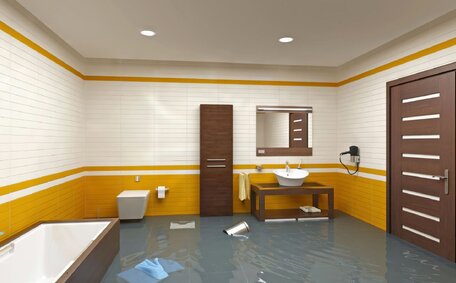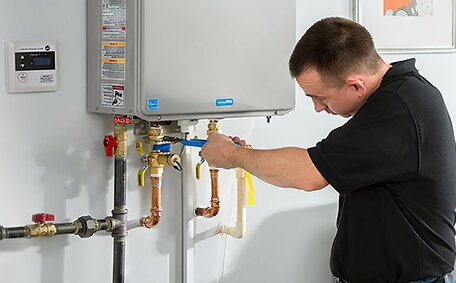
Signs Your Hot Water System Is Failing
Common signs your hot water system is failing include strange noises, rust, leaks, inconsistent temperature and pressure. Call our licensed plumbers if you notice these issues for repairs.
Read MoreSelecting the right pipe relining company requires extensive research, considering the intricacies of pipe repair and relining. We understand that knowledge of a company’s experience in the pipe relining process, reputation, qualifications, and past customer feedback is crucial in choosing a reliable provider.
Inquire and examine their examples of previous pipe repair and relining jobs, and verify qualifications like licencing and industry certifications. Review online testimonials and seek local references to gauge the quality of work and customer service.
A thorough inspection by the company, to evaluate far more than just the immediate damage, and offer the right pipe solutions prior to quoting, is an indicator of a reputable provider. They will evaluate the scope of damage to your damaged pipes to determine what type of relining is needed.
Epoxy and CIPP liners, each with distinct advantages and limitations, cater to different pipe conditions. Ask questions to determine if the company is making recommendations based on your pipes’ damage and requirements vs one-solution-fits-all.
Lacking due diligence, you risk your investment being wasted with the risk of shoddy or unnecessary work. Taking time to do thorough research ensures your pipe relining project is protected from poor workmanship or unwarranted expenses in the future.
Confirm that pipe relining technicians possess the required certifications, training credentials and licences before you engage their services.
Properly trained and certified technicians are essential for quality relining work that follows regulations and industry best practises. Incorrect procedures can lead to early relining failure, resulting in the need for immediate plumbing repairs.
Always ensure the technicians have the right relining qualifications, like epoxy or CIPP training certificates, and the necessary licences for working with hazardous materials. Seek affiliations with respected industry bodies as well.
A lack of credentials risks shoddy application workmanship, failing compliance requirements, safety hazards, and voiding of any service guarantees. Only hire verified, specialised technicians to avoid expensive rectification later on.
Ensure the pipe relining company employs suitable materials and technologies for inspections, cleaning, and the relining process.
Quality epoxy resins and CIPP materials that meet plumbing code regulations and standards will ensure longevity of repairs. Ask to verify certifications and compliance.
Advanced technology such as CCTV drain inspections affects the comprehensiveness of evaluations. And specialist tools like Brawoliner machines ensure seamless curing and bonding of relining materials to your pipe infrastructure.
Using inferior, outdated, or substandard products for installation increases the risk of fragile repairs that deteriorate quickly. This could lead to the need for costly repairs to the sewer line or other plumbing components earlier than expected.
Take the time to comprehend the technologies and resin products employed, as they significantly impact the outcome. Check they suit your specific pipe damage needs. This helps you avoid recurring problems, which you’d understand better with a detailed pipe relining quote, encompassing the entire relining process with high-quality materials or methods.
It’s critical to inquire about any warranties or service guarantees that cover your property when selecting a pipe relining company. Extended warranties often reflect a provider’s trust in their repair quality and durability.
Ask detailed questions to understand the conditions, limitations, and duration of any warranties offered. Be wary of unusually short or restrictive guarantees, as they may not cover the most common pipe issues.
Comprehensive warranties guard against additional costs for repairs if the relining fails prematurely. They also indicate the company’s commitment to service and workmanship, affirming how long they believe their solutions will last.
Scrutinise what issues the warranty covers, including maintenance obligations for its validity. Carefully read the details to fully understand warranty transfer or renewal conditions if you sell your property.
With inadequate guarantees, there’s no safeguard against expensive rectification costs down the track. Checking this safeguards your investment in long-lasting pipe relining solutions.
When weighing up relining versus pipe patching, many are enticed by the apparent cost-effectiveness and speed of quick fixes. However, Temporary fixes may initially appear less expensive than pipe replacement, yet tend to be less durable, incurring greater costs eventually.
Pipe relining is a reliable process that fully renews the inside of pipes to prevent leaks, erosion, tree roots, and blockages. Though pipe relining costs are higher initially, it saves money over time by avoiding repeat repairs.
Patching only targets small sections, neglecting underlying issues like a blocked drain, allowing deterioration to continue. But relining can also coat the full length, providing comprehensive protection for 15-50 years, and may even resolve your blocked drain issues. Weak patches increase the risk of leaks or bursts, particularly in hot water systems, which can disrupt service and jeopardize safety.
So while waiting for full pipe relining, strongly consider interim spot repairs instead of patches. Our specialists can reinforce vulnerable areas with strong fibreglass sections, offering a safe intermediate solution while you prepare for comprehensive pipe relining.
Don’t compromise your pipes with short-term fixes. Opt for lasting solutions to avoid future cost escalations. Engage with our team of experts; Their expert advice can guide you to make informed choices for enduring plumbing results.
Verify that the pipe relining company complies with Australian standards for materials and installation practices.
Ask to see documentation confirming their epoxy resins and CIPP liners carry the Australian Building Codes Board Watermark symbol to indicate suitability and compliance.
Ensure work procedures follow AS/NZS 4671 for thermosetting resins and AS/NZS 1260 for PVC pipes, which encompass safety, testing, and installation practices.
Non-compliant products or practices could fail, leaving you with repair costs, potential hazards from inferior epoxies, or below-par strength.
Non-approved materials could also complicate insurance claims or property sales. Avoid shortcuts by ensuring Australian standards are met, guaranteeing safety and lasting pipe integrity.
When considering pipe relining vs sectional repair, it’s tempting to try saving money by repairing only sections of pipe damage rather than comprehensively relining the full length. This approach risks costlier repairs later on and fails to offer full protection.
A detailed inspection by pipe relining specialists determines all issues – cracked sections, root ingress, corrosion, offsets or other defects. They’ll advise whether the right pipe relining solution is partial or full relining for your drain, based on the specific damage.
Opting to only repair visible leaks or partial blockages leaves weakened areas unaddressed. This allows deterioration, leaks and cracks to continue unchecked further along the pipes. Soon you’re left paying for multiple callouts and repairs as compromised pipes can lead to repeated issues.
Fully relined pipes offer a robust barrier against drain blockages, with a smooth epoxy or vinyl interior coating. In contrast to traditional repair, this method modernises old pipes, ensuring an unobstructed interior free from further erosion, leaks, and blockages. Despite a higher initial investment, pipe relining can lead to long-term savings by eliminating the need for recurrent repairs.
Make sure you understand all underlying issues, like potential blocked drains, before deciding on partial relining. Often the extra upfront cost of fully relining pipes is more than justified by comprehensive protection and avoiding future expenses down the track.
Common signs your hot water system is failing include strange noises, rust, leaks, inconsistent temperature and pressure. Call our licensed plumbers if you notice these issues for repairs.
Read MorePipe relining is an eco-friendly alternative to pipe replacement that uses materials like epoxy resin to repair pipes without digging. It produces less waste and emissions than traditional methods. Learn about the environmental benefits of trenchless pipe relining.
Read MoreReplacing an outdated electric, gas or solar hot water system with a more efficient heat pump or solar model can significantly reduce your energy bills and carbon footprint. Take advantage of available rebates. Contact us to retrofit your old system today.
Read MoreMarrickville, 2204 NSW
We will call back as soon as possible.




